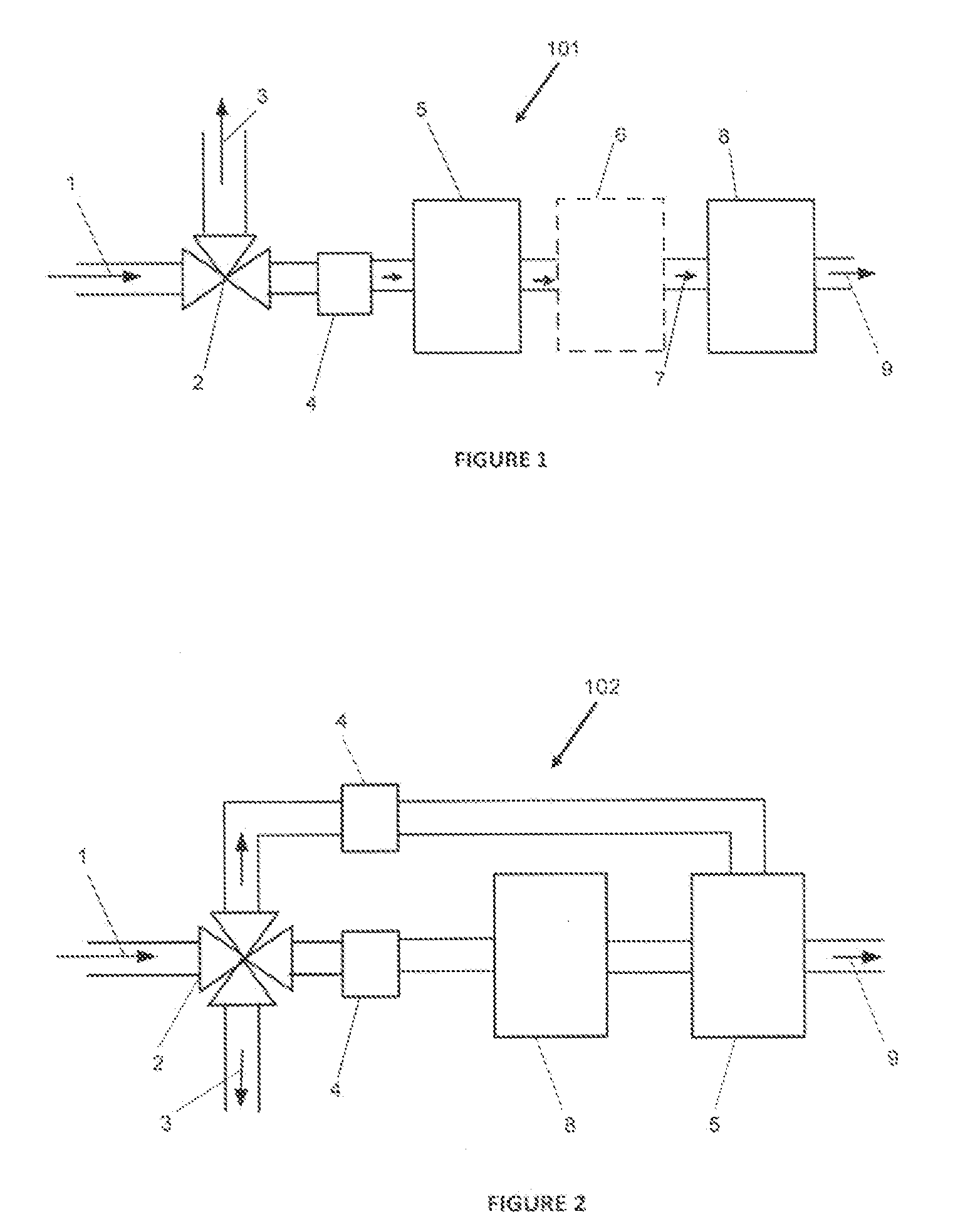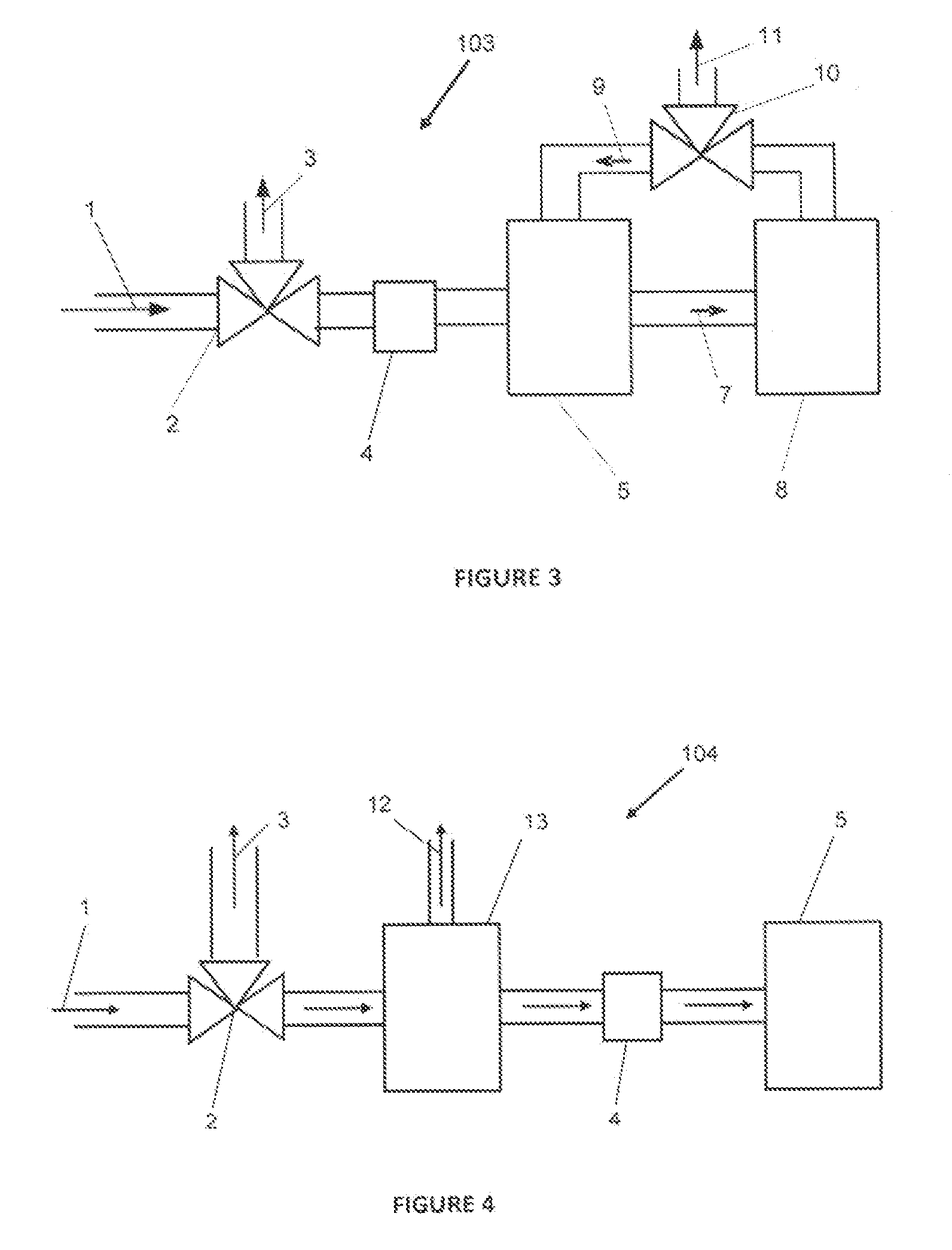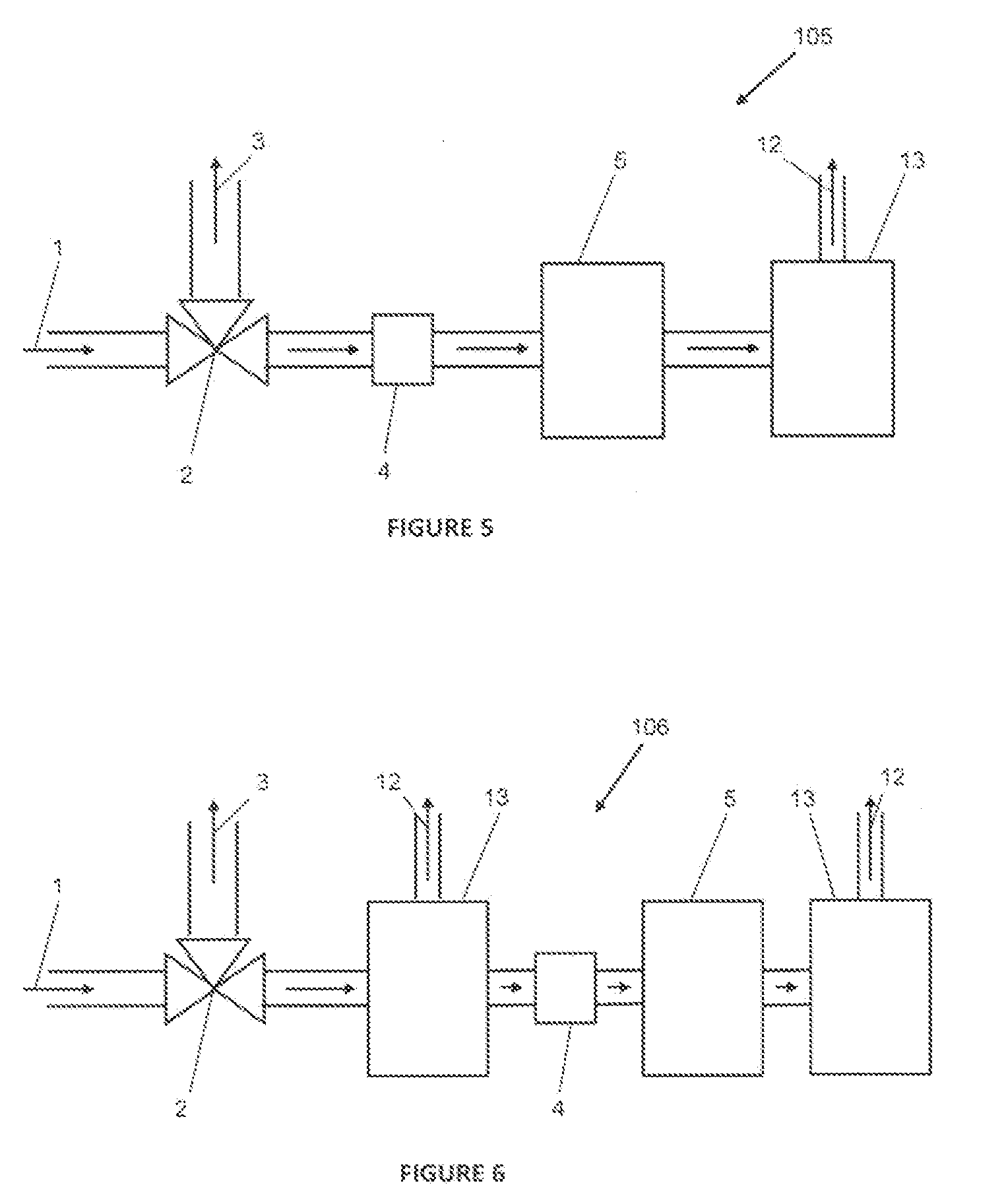Carbon capture in fermentation
a technology of carbon capture and fermentation, applied in the field of carbon capture in fermentation, can solve the problems of affecting the cost of these carbohydrate feed stocks, the efficiency of ethanol production using such fermentation processes is less than desirable, and the cultivation of starch or sucrose-producing crops is not economically sustainable in all geographies, so as to increase the efficiency of processes for producing products and increase the effect of process efficiency
- Summary
- Abstract
- Description
- Claims
- Application Information
AI Technical Summary
Benefits of technology
Problems solved by technology
Method used
Image
Examples
example 1
Fermentation Using Steel Mill Off Gas
Example 1a
Serum Bottle
[0303]Incubation was performed in 250 ml sealed serum bottles each containing 50 ml of the media. The headspace of each serum bottle was first flushed three times with CO2, before being evacuated and filed with the collected steel mill off gas to a final pressure of 25 psig. Each bottle was inoculated with 1 ml of a Clostridium autoethanogenum culture. A shaking incubator was used and the reaction temperature was maintained at 37 ° C.
[0304]Media samples were taken at intervals over a 15 day period. Each time the media was sampled. Care was taken to ensure that no gas was allowed to enter into or escape from the serum bottle.
[0305]All samples were used to establish the cell density and the level of acetate.
[0306]As can be seen from FIGS. 14 and 15, cell growth and acetate production rose during the first 10 days before subsequently slowly tailing off. Thus, cell growth and acetate production were readily supported using the ...
example 1b
Serum Bottle
[0307]Incubation was performed in 234 ml sealed serum bottles each containing 50 ml of the media LM33. The 184 ml headspace of each serum bottle was first flushed three times with steel mill off gas, before being evacuated and filled to an overpressure of 30 psig. Each bottle was inoculated with 2 ml of a Clostridium autoethanogenum culture. A shaking incubator was used and the reaction temperature was maintained at 37° C. The results of the experiments are provided in Table 3.
TABLE 3Serum bottle (30 psig; 50% CO; 18% CO2; 3% H2; 29% N2)Day012Biomass (g / L)0.080.220.19Acetate (g / L)0.41.43.2Ethanol (g / L)000.3Overpressure (psig)302818
example 1c
10L Continuous Stirred Tank Reactor
[0308]A Bioflo 3000 bioreactor was filled with 5 L of the media LM33 without Cysteine nor vitamins solution (LS03) and autoclaved for 30 minutes at 121° C. While cooling down, the media was sparged with N2 and the LS03 solution as well as Cysteine was added. The gas was switched to steel mill off gas prior to inoculation with 150 ml of a Clostridium autoethanogenum culture. The bioreactor was maintained at 37° C. and stirred at 200 rpm at the start of the culture with a gas flow of 60 ml / min. During the growth phase, the agitation was increased to 400 rpm and the gas flow was set to 100 ml / min. The pH was set to 5.5 and maintained by automatic addition of 5 M NaOH. The results of this experiment, including gas consumption are provided in Table 4.
TABLE 4CSTR fermentation supplied with steel mill gasDay12345Biomass (g / L)0.050.080.300.280.20Acetate (g / L)0.400.782.763.104.03Ethanol (g / L)0.000.000.000.480.71Gas Flow in (mL / min)6060100100100CO [%] gas in...
PUM
| Property | Measurement | Unit |
|---|---|---|
| concentrations | aaaaa | aaaaa |
| composition | aaaaa | aaaaa |
| flow rate | aaaaa | aaaaa |
Abstract
Description
Claims
Application Information
 Login to View More
Login to View More - R&D
- Intellectual Property
- Life Sciences
- Materials
- Tech Scout
- Unparalleled Data Quality
- Higher Quality Content
- 60% Fewer Hallucinations
Browse by: Latest US Patents, China's latest patents, Technical Efficacy Thesaurus, Application Domain, Technology Topic, Popular Technical Reports.
© 2025 PatSnap. All rights reserved.Legal|Privacy policy|Modern Slavery Act Transparency Statement|Sitemap|About US| Contact US: help@patsnap.com



